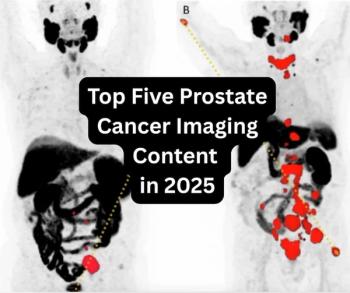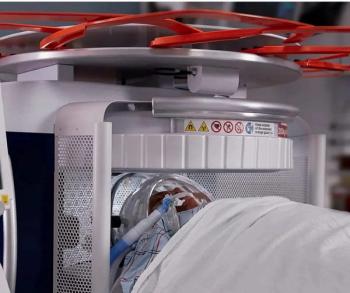
Prostate MRI Detects More Cancers Than Standard US-Guided Biopsy
MR imaging of the prostate detects more treatable cancers and reduces overdiagnosis than standard ultrasound-guided biopsies.
Magnetic resonance imaging before biopsy for prostate-cancer detection is superior to standard transrectal ultrasonography-guided biopsy among men at risk for prostate cancer, according to a study published in the
Researchers from the United Kingdom performed a randomized, noninferiority trial to assess the utility of MR imaging with or without targeted biopsy as an alternative to standard transrectal US-guided biopsy for prostate cancer detection among men with raised PSA levels but who have not undergone biopsy.
Five hundred men with clinical suspicion of prostate cancer participated in the trial. They were randomized to undergo MRI without targeted biopsy, or standard transrectal US–guided biopsy. Men in the MRI-targeted biopsy group underwent a targeted biopsy (without standard biopsy cores) if the MRI was suggestive of prostate cancer. The men whose MRI results were not suggestive of prostate cancer were not offered a biopsy. Standard biopsy was a 10-to-12–core, transrectal US–guided biopsy. The primary outcome was the proportion of men who received a diagnosis of clinically significant cancer. Secondary outcomes included the proportion of men who received a diagnosis of clinically insignificant cancer.
The results showed that 71 of 252 men (28 percent) had MRI results that were not suggestive of prostate cancer, so they did not undergo biopsy. Clinically significant cancer was detected in 95 men (38 percent) in the MRI-targeted biopsy group, as compared with 64 of 248 (26 percent) in the standard-biopsy group. MRI, with or without targeted biopsy, was noninferior to standard biopsy, and the 95 percent confidence interval indicated the superiority of this strategy over standard biopsy. Fewer men in the MRI-targeted biopsy group than in the standard-biopsy group received a diagnosis of clinically insignificant cancer.
"PRECISION is the first international multi-center randomized trial to show the benefits of using MRI at the start of the prostate cancer diagnosis process,” said Veeru Kasivisvanathan in a release. Kasivisvanathan is an NIHR doctoral fellow and SpR in urology at University College London and first author of the study. “In men who need to have investigation for prostate cancer for the first time, PRECISION shows that using an MRI to identify suspected cancer in the prostate and performing a prostate biopsy targeted to the MRI information, leads to more cancers being diagnosed than the standard way that we have been performing prostate biopsy for the last 25 years."
Coauthor Professor Mark Emberton, also from University College London added, “This study was the first to allow men to avoid a biopsy. If high quality MRI can be achieved across Europe, then over a quarter of the one million men who currently undergo a biopsy could safely avoid it.”
Newsletter
Stay at the forefront of radiology with the Diagnostic Imaging newsletter, delivering the latest news, clinical insights, and imaging advancements for today’s radiologists.




























